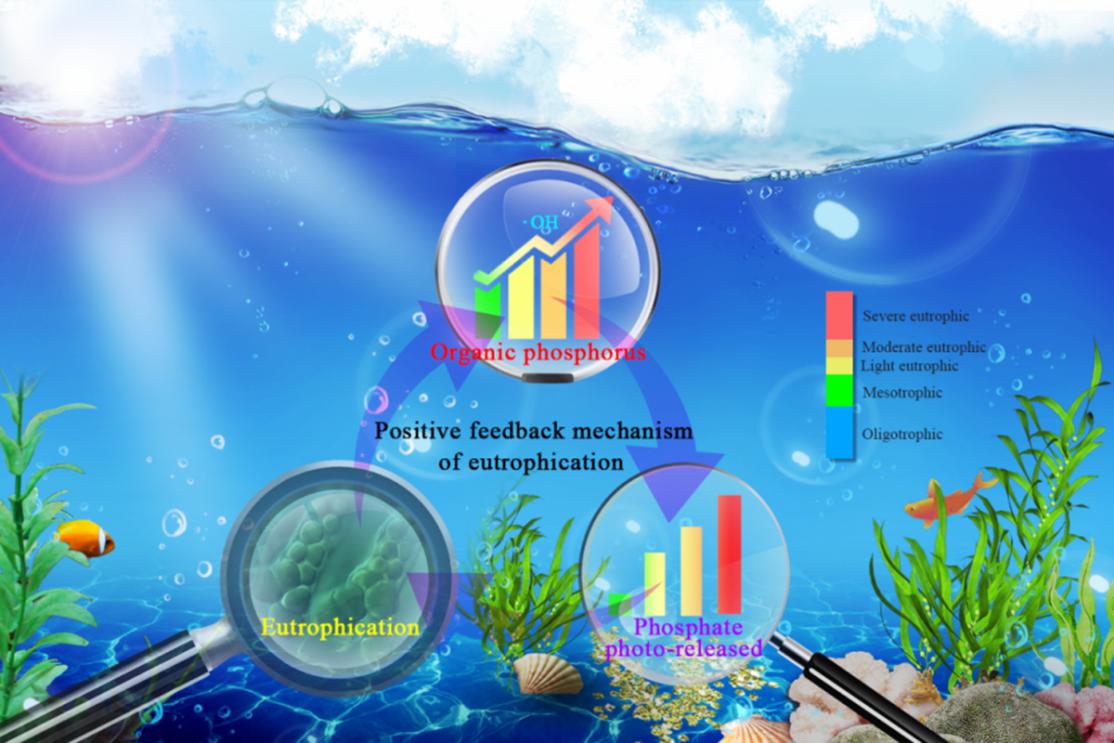Recently, two research papers entitled Distribution of organic phosphorus species in sediment profiles of shallow lakes and its effect on photo-release of phosphate during sediment resuspension, and Photo-induced phosphate release during sediment resuspension in shallow lakes: A potential positive feedback mechanism of eutrophication were respectively published on Environment International and Environmental Pollution by Associate Professor Liu Guanglong from HZAU

Lake eutrophication has become one of the most serious water environment problems, resulting in the excessive growth of algae and other phytoplankton, the decrease of dissolved oxygen in water, and the death of fish. In general, Phosphorus plays a significant role in lake eutrophication process, which determines the primary productivity of water to some extent. As an important and potential part of phosphorus, organophosphorus makes great differences in the biogeochemical cycle of lake phosphorus. When planktonic algae break out, dissolved phosphates in water are consumed in large quantities, and the conversion of organophosphorus to inorganic phosphorus is one of the important ways for phosphorus compensation. However, it is hard to explain the process of lake eutrophication and the reason for continuous water blooms due to the limited systemic knowledge in migration and transformation of lake organophosphorus.
This research reaches into the conversion process and mechanism from organophosphorus by photodecomposition to inorganic phosphorus in the process of sediment resuspension in shallow lakes. The results indicate that such phosphorus which firstly goes through resuspension and then is injected into the water column would go under photochemical decomposition and release the dissolved inorganic phosphorus under sunlight radiation. The amount of such release would increase with the growing of lake nutrition level. And it can be affected by the level of organophosphorus, resuspension intensity and irradiation spectrum. According to the analysis of phosphorus speciation, moderately labile organic phosphorus (MLOP) is the main contributor to the release of phosphorus photodecomposition, while in phosphate monoester, the inositol hexakisphosphate, glucose-6-phosphate, α-glycerophosphate and β-glycerophosphate, mononuleotides, and choline phosphate, are the major molecule forms in the process of phosphorus photodecomposition. Studies on the driving mechanism of this subject show that hydroxyl radicals (• OH) produced by Fe3 +, NO3-, and DOM in lake water is the main booster for the release from inorganic phosphorus photodecomposition. However, with the increase of nutrition level, DOM gradually becomes a major source to ·OH. The increase of lake’s nutrition level mirrors the same development trend towards the content of organic phosphorus and the production of ·OH. During this process, more dissolved inorganic phosphorus is produced, which accelerates the lake’s eutrophic process.It can be inferred that the release of phosphorus photodecomposition in shallow lakes may be one of the positive feedback mechanisms to its eutrophication process.
Li Xiaolu, PhD student of HZAU, is the first author of the first paper and Associate Professor Liu Guanglong and Professor Dionysios D. Dionysiou of University of Cincinnati are the corresponding authors. Guo Minli, PhD student of HZAU, is the first author of the second paper and Associate Professor Liu Guanglong is the corresponding author. This research is sponsored by the General Program of National Natural Science Foundation of China, Sub-project under National Science and Technology Support Program, and Fok Ying-Tong Education Foundation for Young Teachers in the Higher Education Institutions of China.
Source: http://news.hzau.edu.cn/2019/1205/55884.shtml
Translated by: Liu Yuhan
Supervised by: Guo Haiyan
